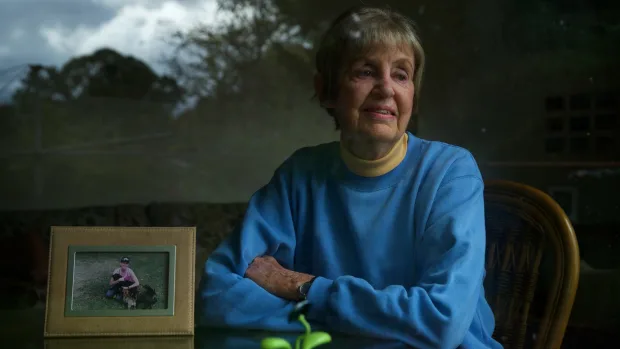A Comprehensive Exploration of “Crash Course Psychology”

In the vast landscape of online education, few resources have garnered as much attention and praise as “Crash Course Psychology.” Developed by Hank Green and John Green, this educational YouTube series has become a cornerstone for those seeking a concise yet insightful introduction to the field of psychology. With its engaging style, informative content, and widespread accessibility, “Crash Course Psychology” has not only educated millions but also sparked a broader interest in the workings of the human mind. This article aims to delve deeply into the series, exploring its impact, effectiveness, and contributions to the popularization of psychology.
The Origins and Evolution of “Crash Course Psychology”
1. Genesis of the Series
“Crash Course Psychology” emerged as part of the larger “Crash Course” educational platform, which aimed to provide quick-paced, high-quality educational content on various subjects. Launched in 2012, this series was a collaboration between Hank Green, known for his science communication skills, and John Green, acclaimed author and educator.
2. Format and Structure
The series adopted a distinctive format characterized by short, animated episodes, each focusing on a specific topic within psychology. This format aimed to simplify complex concepts without sacrificing depth, making it accessible to viewers with varying levels of familiarity with psychology.
3. Evolution Over Time
As the series gained popularity, it expanded its scope to cover a wide range of psychological theories, principles, and applications. Episodes began incorporating guest experts and real-world examples, enhancing the series’ educational value and relevance.
Analyzing the Educational Value
1. Accessibility and Reach
One of the key strengths of “Crash Course Psychology” lies in its accessibility. Available for free on YouTube, the series reaches a global audience, transcending geographical and financial barriers to education. Its engaging style and straightforward explanations appeal to viewers of all ages and educational backgrounds.
2. Effectiveness in Knowledge Transmission
The series employs effective teaching strategies such as storytelling, analogies, and visual aids to convey complex psychological theories and concepts. By breaking down information into digestible segments, “Crash Course Psychology” facilitates understanding and retention among its viewers.
3. Impact on Education
“Crash Course Psychology” has had a profound impact on psychology education by fostering curiosity and enthusiasm among learners. It serves as a supplementary resource for students studying psychology formally and a primary source of foundational knowledge for individuals interested in exploring the field independently.
Content and Coverage
1. Key Topics Explored
The series covers a broad spectrum of topics, including but not limited to:
- Biological bases of behavior
- Cognitive processes
- Developmental psychology
- Social psychology
- Psychological disorders and treatments
2. Depth and Breadth of Coverage
While maintaining brevity in individual episodes, “Crash Course Psychology” manages to provide comprehensive coverage of each topic. It strikes a balance between depth and breadth, offering enough detail to facilitate understanding while encouraging further exploration.
3. Integration of Research and Application
Episodes often integrate current research findings and real-world applications, illustrating the relevance of psychological theories to everyday life. This approach not only enhances the educational experience but also underscores the practical implications of psychological concepts.
Critique and Controversies
1. Simplification vs. Depth
Critics argue that the series’ emphasis on brevity and simplicity occasionally sacrifices the depth necessary for a nuanced understanding of complex psychological phenomena. While effective as an introductory resource, “Crash Course Psychology” may leave advanced learners wanting more detailed explanations.
2. Representation of Diversity
The series has faced scrutiny regarding its representation of diverse perspectives within psychology. Critics contend that more emphasis should be placed on including voices from underrepresented groups and exploring issues of cultural relevance in psychological research.
Beyond the Screen: Community Impact and Engagement
1. Building a Community of Learners
“Crash Course Psychology” has cultivated a vibrant online community of learners who engage in discussions, share insights, and support each other’s educational journeys. This sense of community fosters collaborative learning and encourages viewers to delve deeper into the subject matter.
2. Inspiring Further Exploration
For many viewers, “Crash Course Psychology” serves as a gateway to further exploration of psychology. It inspires curiosity and encourages individuals to pursue formal education in psychology or related fields, thereby contributing to the growth of the discipline.
Conclusion: The Legacy of “Crash Course Psychology”
“Crash Course Psychology” has undoubtedly left a lasting imprint on the landscape of online education and popular psychology. By combining accessibility with educational rigor, the series has democratized access to psychological knowledge and inspired a new generation of learners. While not without its limitations, its impact on fostering interest in psychology and promoting lifelong learning is undeniable. As the series continues to evolve and adapt to new educational challenges, its legacy as a pioneering educational resource remains secure.
In summary, “Crash Course Psychology” stands as a testament to the transformative power of online education in making complex subjects both understandable and engaging. Through its innovative approach and commitment to quality content, it has set a benchmark for educational videos while leaving an indelible mark on the minds of its viewers worldwide.





